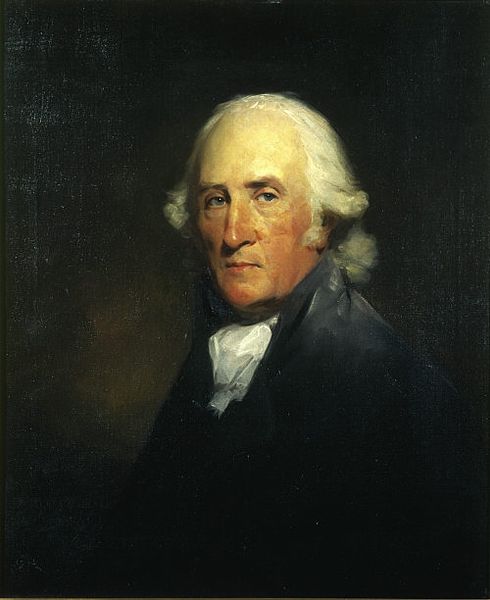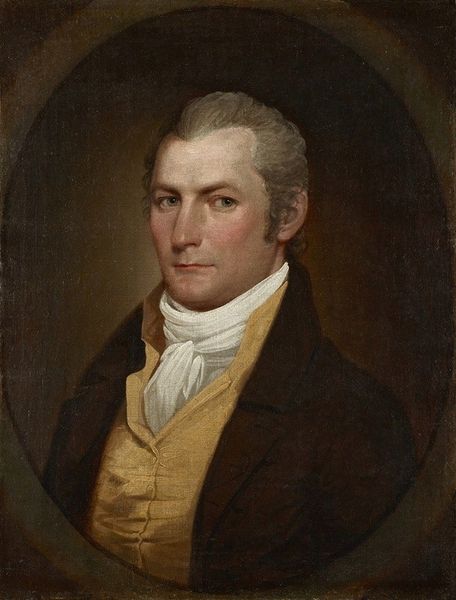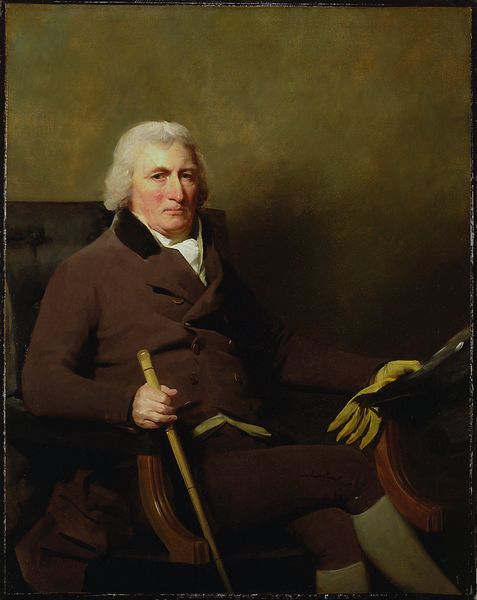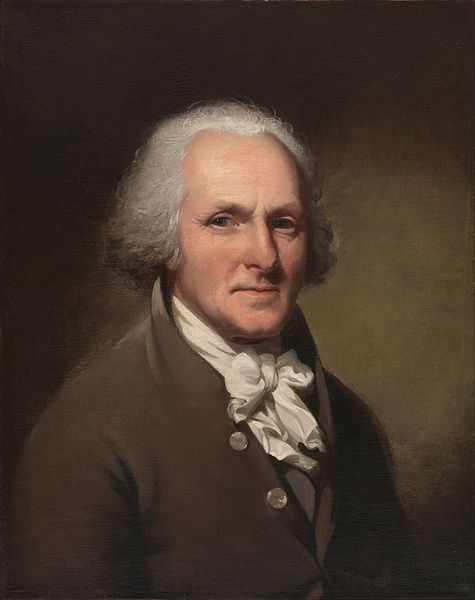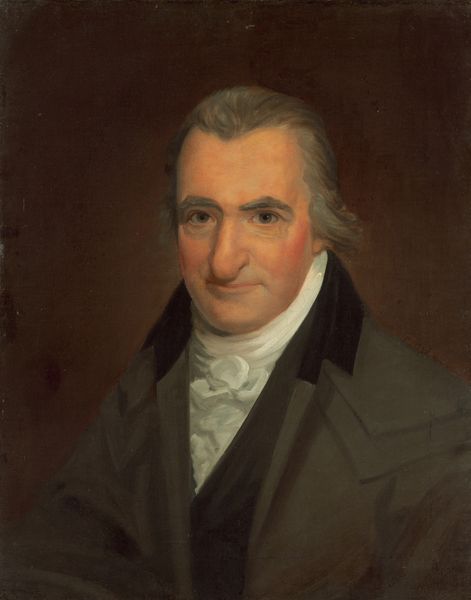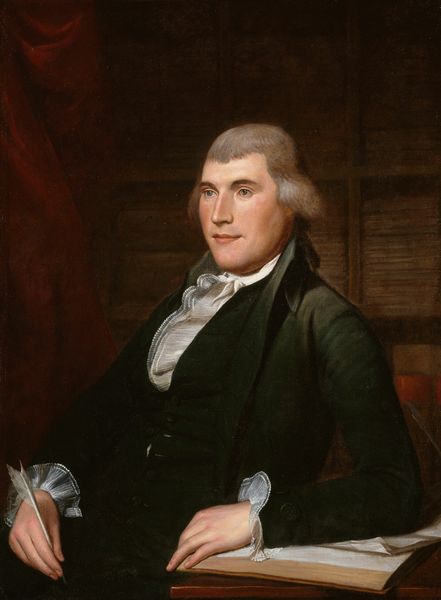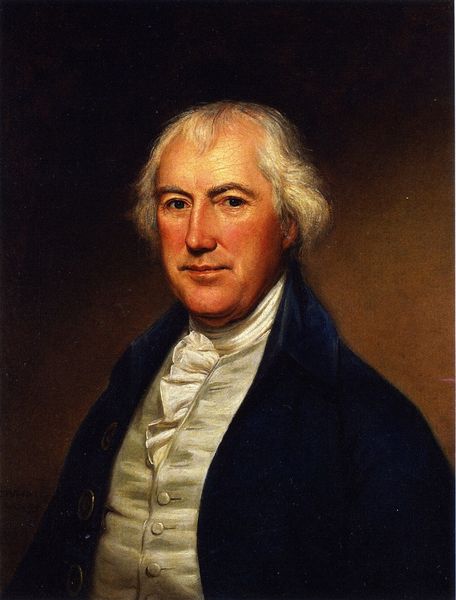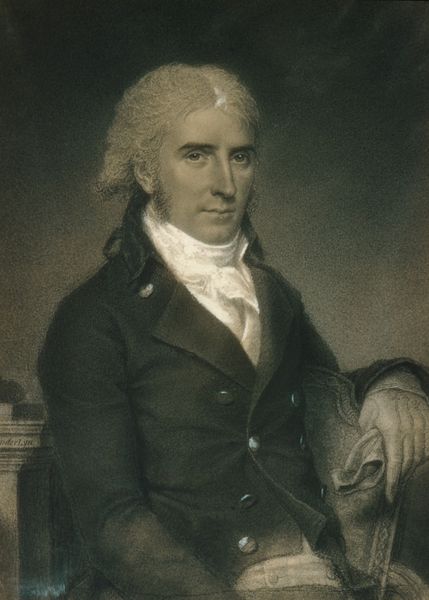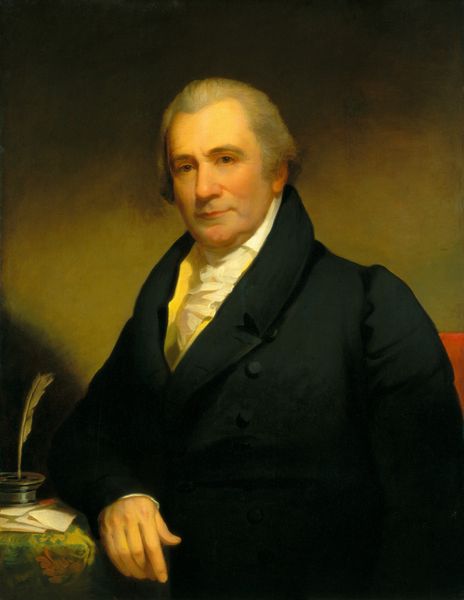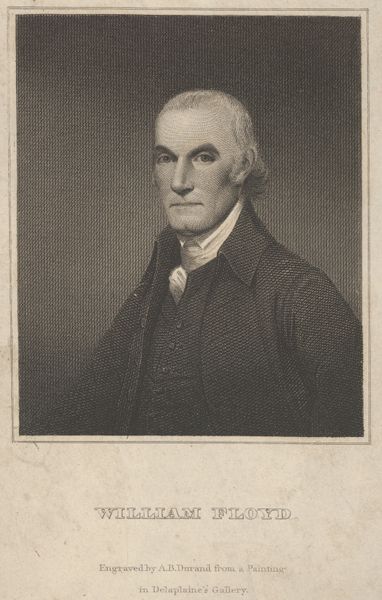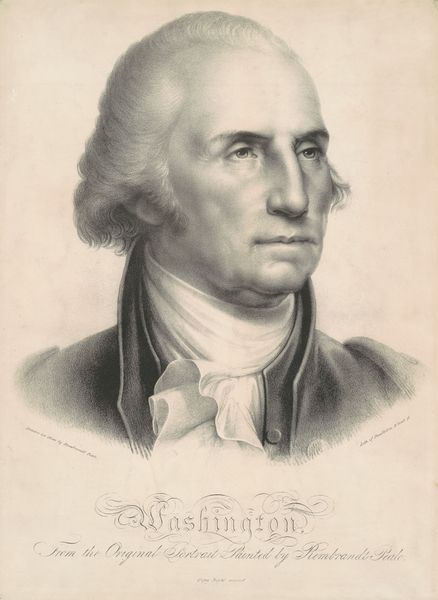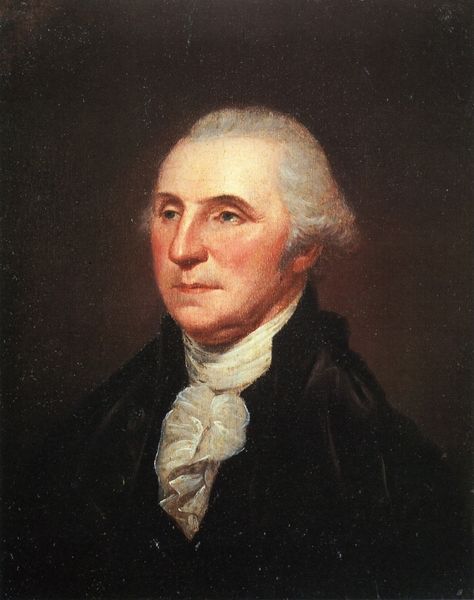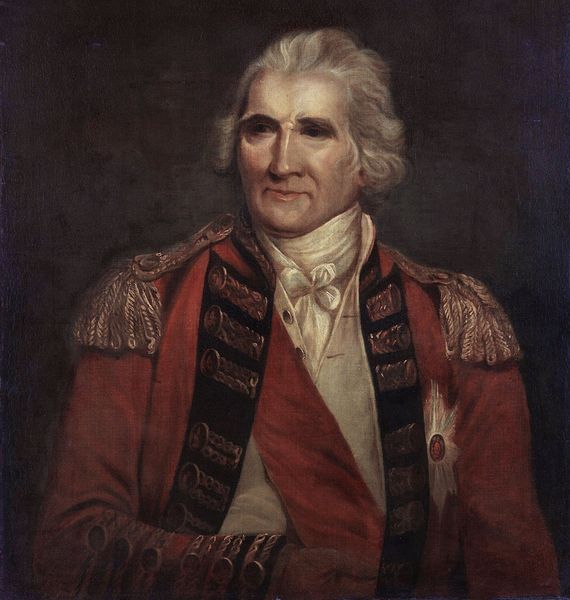
painting, oil-paint
#
portrait
#
portrait
#
painting
#
oil-paint
#
romanticism
#
history-painting
Dimensions: 36 1/4 x 27 5/16 in. (92.1 x 69.4 cm)
Copyright: Public Domain
Curator: Looking at this intriguing portrait of Elie Williams by Charles Willson Peale, painted in 1789, I am immediately drawn to the composition itself—the textures in his clothing rendered meticulously using oil paint. Editor: Indeed, there’s an immediate air of reserved power radiating from Williams, wouldn't you agree? The stark contrast between his direct gaze and the formality of his attire really situates him within that late 18th century context of emerging American identity. Curator: Absolutely, the buttons on his coat and even the way the light catches on the paper in his hand speaks volumes about production—you think about the work hours creating and even dressing for an important occasion like a portrait session. Editor: Right. It is hard to ignore, given our contemporary context, that this man benefits from a labor structure rooted in inequality. So, while he might present an image of self-made success, it is built upon exploited labor of enslaved people. The material affluence isn't an isolated aesthetic choice but tied to larger ethical implications. Curator: Certainly. Focusing back on the purely visual elements though—consider the detail in his lace cuff and the subtle gradation in the background, all achieved with precise oil techniques typical for that period. One can appreciate the craft involved, not to justify inequality, but to understand the material capabilities during that time. Editor: And to understand the painting itself is to contend with those interwoven layers. It’s this very tension – this visual embodiment of status built upon exploited labor – that makes Peale's portraits so compelling, sparking necessary and difficult dialogue with audiences today. What did success mean at that moment and at what cost? Curator: Ultimately, examining the physical aspects of the piece and how it came into being leads us into these essential discussions surrounding American identity and labor systems that you brought to the fore. Editor: It becomes impossible not to interrogate the legacies that have made our present day.
Comments
No comments
Be the first to comment and join the conversation on the ultimate creative platform.
